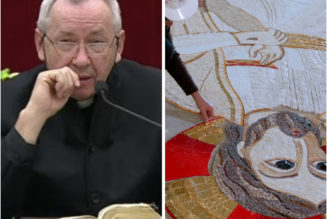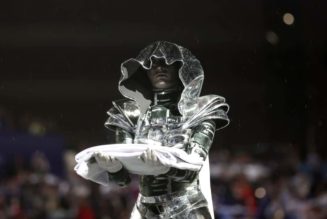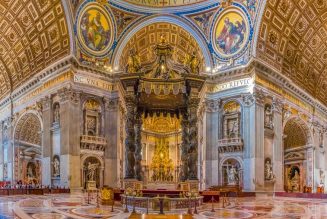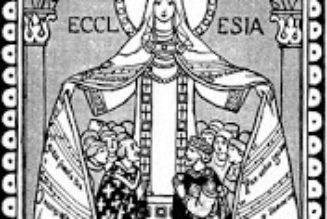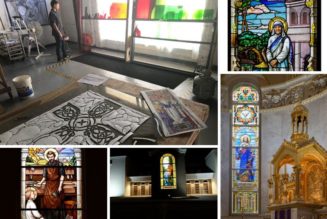David Murgia, a religion journalist who has produced a number of projects for national television networks in Italy, and who is also a supporter of the alleged apparitions at Medjugorje, writes on his blog Il Segno di Giona (“The Sign of Jonah”) that he has come into the possession of a copy of the Ruini commission report. In this post I’ll present a draft English translation of his excerpts from the report.
This study group was launched under Pope Benedict XVI in 2010 and led by Camillo Cardinal Ruini, the former head of the vicariate of Rome. It spent four years gathering information on the case and forwarded its result, a thirty-page document, to the Congregation for the Doctrine of the Faith. Pope Francis praised the group for its work and some leaks appeared about its conclusions, but neither the Pope nor CDF took any steps toward an official approval or rejection of the apparition claims. Instead, Pope Francis appointed a bishop – a rather sympathetic one to the Medjugorje phenomenon – from outside Bosnia-Herzegovina to provide pastoral supervision.
The document excerpts provided by Mr. Murgia are consistent with the story linked above, but go into some aspects of the commission’s positions. The first excerpt gives an example of rather typical academic prose in Italian: a preference for many nouns and few verbs, for impersonal expressions, and for length:
“Having identified the formal object and specific material capable of offering and outlining the physiognomy of a religious event of specific interest, from the point of view of its possible supernatural origin, this can then be recognized, in a sufficient and reasonable way, in the first seven alleged apparitions, which are attested to have taken place from June 24 to July 3, 1981 to Ivanka Ivanković, Mirjana Dragičević, Vicka Ivanković, Ivan Ivanković, Milka Pavlović and Ivan Dragičević (that is, the seers Marija Pavlović and Jakov Čolo, now part of the six seers, were added on June 25, 1981, while Milka Pavlović and Ivan Ivanković ‘left’ the group of the seers.)”
“the hypothesis of a demonic origin from the beginnings of the phenomenon appears gratuitous and unfounded… by the positive fruits derived from the phenomenon itself”
“On the basis of these data, the International Commission considers that it can affirm with reasonable certainty that the first seven apparitions prove to be intrinsically credible, as they were capable of fostering in those who saw them an awakening of faith, a conversion in their way of life, and a renewed sense of belonging to the Church.”
The commission’s members voted in agreement with the proposition that start of the phenomenon was “not attributable to human dynamics alone, but having a supernatural origin” [the vote was: 13 for, 1 against, with one member deferring on the question].
Considering the widespread promotion of belief in the phenomenon: “…. It can be affirmed, therefore, that the succeeding thirty-year history since the original events has spread so far and in such depth as to exclude an individual or mass manipulation. We are faced with a dynamic — with every possible caution for this analogy — of the little seed that bears great fruits.”
The Commission does not, however, think that everything claimed by the seers bears signs of heavenly authenticity: “The International Commission has had to consider the repetitive banality of some of the communications which the witnesses declare they received from the Gospa, and likewise the lack of elements of incalculability and of transcendence, which is proper to supernatural character – while the content of these communications remains generally in line with the fides Ecclesiae.”
The commission, despite its investigative mission, did not think it had authority to insist on any disclosure of the “ten secrets” allegedly entrusted to the seers: “The way in which the alleged witnesses speak of these realities, through some analogous aspects, recalls the function taken on by elements both in the course of phenomena authenticated by the Church – foremost of them, Fatima – and in the realm of phenomena not recognized as such by competent ecclesiastical authority but which continue, one way or another, to have credibility among some sectors of the Christian people. The International Commission has considered itself unable to order the alleged seers to reveal the content of the ‘secrets’, and thus it does not have the power to include this in its decisions…. Moreover the alleged seers describe them as hidden realities which, by order of the Gospa, cannot be revealed until the opportune moment, which will be shown to them exclusively by the Madonna.”
Hence the “secrets” and the “life of Mary” and analogous texts “cannot enjoy any ecclesiastical approval”.
The commission advises that for any ongoing events “the linguistic formulation of the alleged messages of the Madonna… should take place in the presence of the priest entrusted with the spiritual accompaniment of the alleged seer”. This is astounding advice, urging authorities to have the alleged messages from Heaven processed through a doctrinal inspection before they are ever spoken or written. It would become impossible to separate the mystical phenomenon itself from the human activity of its overseers, and so judging the authenticity of new messages on the grounds of their compatibility with sound doctrine would become practically impossible. An intervention like this did actually happen in the past: at the time in the 1980s messages were recorded in the parish’s “Chronicle of the apparitions” maintained by then-friar Tomislav Vlasić, eventually laicized in 2009 after his own doctrine and behavior were investigated by CDF. Some questionable points of doctrine were recorded in the Chronicle as messages from the Madonna with no apparent objection from him.
“What the International Commission has been able to ascertain, in regard to the accusation of a possible seeking of profit, is that the witnesses of the supernatural sign originally addressed to them now effectively have a relation, ambiguous in certain aspects, with money (and with what in general can be called a preoccupation with their own ‘wellbeing’). Yet this ambiguity, rather than being located on the side of immorality, is found on the side of the structure of the person, often lacking a solid discernment and a coherent orientation, and also because an available and steady spiritual guide has been lacking to them in the course of these thirty years. If anything, there have been many signs exhibited of spiritual self-promotion and of a lack of pastoral relationships.”
“In other words, it is fitting to recognize that, for long years, neither the bishops of Mostar-Duvno, nor the community of Franciscan friars of Medjugorje established relations with these persons of sufficient regularity and in-depth discernment of the meaning of the events which they claim and even now claim to experience. This circumstance has probably accented the current relative ‘impenetrability’ of the witnesses: innocent at times and calculated in others, through the protecting effect of repetitive formulas and stereotypes defending their mariophanic ‘experience’.”
In presenting quotations from the report, Murgia the journalist chooses to shield the subjects of the report from full disclosure, opting to leave out the name of one seer whose behavior the Commission finds particularly suspect. “This lack of spiritual and human accompaniment is surely one among the causes of certain ambivalences and ambiguities that have been manifested among the protagonists of the phenomenon underway. This negative dynamic reaches its apex in the case of [Redacted], whose continuing meetings and conferences on the Medjugorje phenomenon seem to constitute [his or her] only work and support. [Redacted] has also lied multiple times and is also less credible in the way [he or she] speaks of experiences with the Gospa.”
“The alleged seers have appeared substantially credible in their witness of the first seven apparitions, and also through the succeeding alleged apparitions, it does not seem possible to deny their subjective good faith, independent of judgment on the reality of the event. This positive evaluation, however, does not extend to [Redacted], on whose credibility serious and demonstrated reservations have emerged. Also, as regards moral conduct and in particular the question of the quaestus lucri, the position of [Redacted] is more compromised than that of the other alleged seers.”
“Church authority must keep watch over the economic activities of the alleged seers connected with the Medjugorje phenomenon, especially in the case of [Redacted].”
“Attention and pastoral care must be addressed to them above all, toward the development and deepening of their spiritual life and their sense of belonging to the Church. They do not in fact appear mature either in their faith or in their ecclesiality, and at certain times not even in their psychological consistency. The fact that none of them have been really followed by a spiritual director in their personal journey can at least explain these lacks in part.”
I find it puzzling that the commission found the first seven alleged apparitions were able to arouse faith and a sense of belonging to the Church, so well that the commission considered it a sign of the events’ supernatural origin; and yet the ensuing 38 years have not brought the seers to mature faith or self-understanding as members of the Church.
The commission “recognizes that the alleged seers, in their public statements, do not intend to take the place of the Church, and they do keep her doctrine in mind, in a sufficiently balanced way. However, there are strong tendencies to draw attention to themselves and their current alleged visions, rather than on the Christocentric and ecclesial substance of Marian spirituality.”
The commission offered some advice for the local pastors: “The Franciscans are ensuring good pastoral care” which must be “integrated and strengthened (if necessary with a greater contribution even from non-Franciscans).” “The catechesis of the Franciscans is conducted very well, in particular from the pedagogical point of view,” according to the commission.
As part of that pastoral care there has been an increase in “confessionals, guaranteeing the conditions, including physical conditions, for respect for the secret”; and “a precise discipline of confessors, verifying their identity and suitability” is being ensured.
In addition, the Commission wrote, “an enlargement of the size of the parish church” was to be hoped for.
Thanks to David Murgia for making these excerpts available; one can only hope that he will go on to publish the entire content of the report.
As for the Medjugorje question, it is left without a determinate conclusion, as with quite a few issues in the current papacy: the supportive papal visitator Abp. Hoser continues to watch over activities in the parish, including what are now officially approved pilgrimages, while the skeptical theologian-bishop Ratko Perić remains in office, even at the age of 76 governing the dioceses of Mostar-Duvno and Trebinje-Mrkan.


